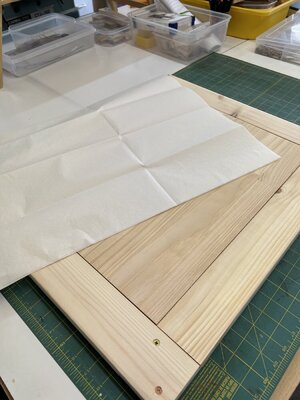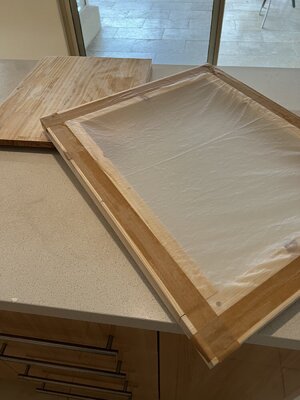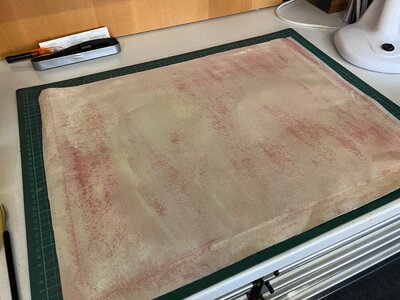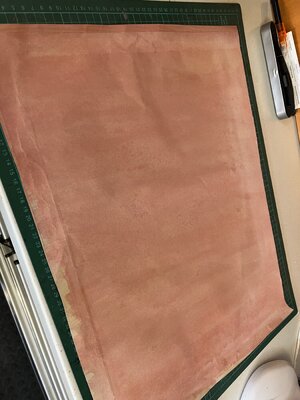I’m having a go at making sails with silkspan.
I’m following the Sail making supplement by David Antscherl
My ship is 1/36 scale
I’m using medium silkspan.
I’ve applied about 3 coats of thin milky acrylic paint, but have discovered the paint doesn’t appear to have affected the reverse side as well. There is no mention of painting the reverse side. So I presume the paint should penetrate enough through the silkspan. Is it because I’m using medium silkspan? (Ther medium silkspan appears to be quite delicate tissue paper itself). I haven’t been able to obtain thin silkspan.
See photos




I’m following the Sail making supplement by David Antscherl
My ship is 1/36 scale
I’m using medium silkspan.
I’ve applied about 3 coats of thin milky acrylic paint, but have discovered the paint doesn’t appear to have affected the reverse side as well. There is no mention of painting the reverse side. So I presume the paint should penetrate enough through the silkspan. Is it because I’m using medium silkspan? (Ther medium silkspan appears to be quite delicate tissue paper itself). I haven’t been able to obtain thin silkspan.
See photos








